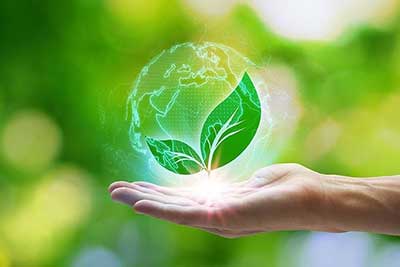Relevance: GS-3 :Agricultural produce and issues and related constraints
Key phrases: Biodiversity, Micro-climate,Climate-smart agriculture , Reduce trade-offs and promote synergies, Inclusive and sustainable agriculture, NCRB, landscape management
Why in the News?
- In the year 2020-21,Crops standing over 11.28 lakh hectares (provisional) have been affected due to hydro meteorological calamities, including floods in Maharashtra according to the Union Government data.
- Moreover, crops of over 4.55 lakh hectares have been affected due to natural calamities and 489 people have died. Also there was a loss of 4,400 livestock and over 53,000 houses were damaged during this period.
- So, farmers say the drought is better than rains.
Background Information
- In 2016, the Indian Railways rushed a special ‘Water Train’ to parched Marathwada to mitigate the drinking water crisis in the region haunted by severe drought. Today, farmers in Marathwada say that something should be done to stop rains that are inundating fields and damaging crops.
- In the last three years, all the drought-affected areas in Maharashtra have received heavy seasonal and unseasonal rains resulting in massive floods damaging crops and incurring heavy losses.
- Farmers claim huge damage to crops on 25 lakh hectares of land in this monsoon.
- Rising Farmers suicides cases in the region according to NCRB data.
How Agriculture Affects the Climate?
- Significant amounts of methane and nitrous oxide, two powerful greenhouse gases, released from agriculture.
- Livestock is alone responsible for 44% of methane emissions.
- Fertilisers rich in nitrogen pollute water and threaten the aquatic ecosystem.
- Monocultures along with pesticides and herbicides lead to the loss of biodiversity.
- Clearing uncultivated land for farming can lead to the destruction of natural ecosystems, which may have a devastating effect on the local wildlife and biodiversity and the micro-climate.
How changing climate affects Agriculture?
- Extreme heat events and reductions in precipitation and water availability have hampered the crop productivity.
- Rainfall patterns have already begun shifting across the country, and such changes are expected to intensify over the coming years.
- Flooding in many agricultural regions of the country have been witnessed and these floods have devastated crops and livestock, accelerated soil erosion and have polluted water.
Expert Advice - Climate-smart agriculture can help in reducing the distress of Farmers.
- Climate-Smart Agriculture (CSA) is an approach for transforming and reorienting agricultural production systems and food value chains so that they support sustainable development and can ensure food security under climate change.
Need for CSA
- Sustainably increasing agricultural productivity and incomes, and helps in adaptation and building resilience to climate change, reducing greenhouse gas emissions, where possible.
- The climate-smart agriculture approach seeks to reduce trade-offs and promote synergies to make crop and livestock systems, forestry, and fisheries and aquaculture more productive and more sustainable.
- It involves the assessment and application of technologies and practices, the creation of a supportive policy and institutional framework and the formulation of investment strategies.
Different components of climate-smart agricultural systems
- Balancing food security and climate change: Management of land, crops, livestock, aquaculture and capture fisheries to balance food security and livelihoods with climate change.
- Ecosystem and landscape management to conserve ecosystem services that are important for food security, agricultural development, adaptation and mitigation
- Services for farmers and land managers that can enable them to better manage the risks and impacts of climate change and undertake mitigation actions
- Changes in the wider food system including demand-side measures and value chain interventions that enhance the benefits of climate-smart agriculture.
CSA’s role in mitigating impacts of climate change
- Making agriculture more resilient as it absorbs a larger proportion of economic impact from climate change and extreme weather events like droughts, flooding, hailstorms, cyclones, fluctuating yields etc.
- Protecting against disruption in livelihood of fishing communities such as from salt water intrusion in deltas and estuaries due to sea level rise and reduced river flow, through ecosystem management.
- Balancing food security and livelihood concerns of farmers and fishermen with mitigation measures for example, changes in food production management like planting dates, cultivar choice and irrigation which may increase yields by 7-15%.
Conclusion
- There is a need to take a multi-pronged approach to address climate change challenges of agriculture. The larger goal should be to increase penetration of climate smart agriculture in India to promote inclusive and sustainable agriculture growth.
Mains Question:
Q. What do you mean by Climate Smart Agriculture? Despite its significance in climate change mitigation and substantial beneficial aspects for agricultural modernisation, the progress made in adoption of Climate Smart Agriculture is unimpressive in India. Discuss. ( 15 marks)
Source- The Hindu BL









